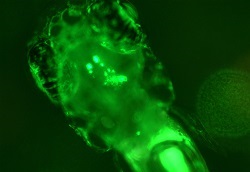Novel photonic devices thanks to loss and gain interplay
Photonic media with gain and loss offer exciting potential for the control of electromagnetic radiation in micro and nanolasers. Scientists initiated the NOLACOME(opens in new window) (Nonlinear optics and lasing in complex media) project to conduct a detailed theoretical exploration of important related topics. Spurred by the potential of optical systems combining loss and gain, researchers thoroughly examined scattering in parity-time (PT)-symmetric cavities described by non-Hermitian Hamiltonians. The scattering properties of such cavities are crucial for understanding PT lasers and their relation to their time-reversed counterparts – the anti-lasers. The team explored the points where the symmetry breaks in both closed and open cavities. In general, non-Hermitian optical cavities have recently attracted great attention as they lead to a range of extraordinary phenomena, including unidirectional invisibility. This is a remarkable example of illusion optics – light reflection is zero when measured from the one end at exceptional (symmetry-breaking) points, and non-zero when measured from the other end of the structure. Materials combining both loss and gain media can act as unidirectional invisible media. Researchers shed further light on the peculiar properties of such power amplifiers that have a key role in mitigating losses in active plasmonic structures. Achieving lossless (without reflections) unidirectional light propagation in plasmonic waveguides can lead to a new generation of highly compact integrated nanophotonic devices. Studying for the first time waves of constant intensity and their instabilities in the presence of (random) media with gain and loss, researchers showed that there are no reflections during propagation. These unidirectional waves are a generalisation of plane waves propagating in free space to non-Hermitian media. Another research focus involved studying non-linear effects in open photonic systems with gain and loss. The team successfully described the time dynamics of coupled non-linear PT-symmetric phonon lasers by solving non-linear lasing equations. By examining the oscillator states, it advanced insight into the effect of non-linear saturation on the symmetry breaking. Results demonstrated the existence of a new phase transition from a high thermal noise state to a low-amplitude lasing state. NOLACOME results offer the possibility to develop synthetic optical devices and structures with enhanced functionality.







